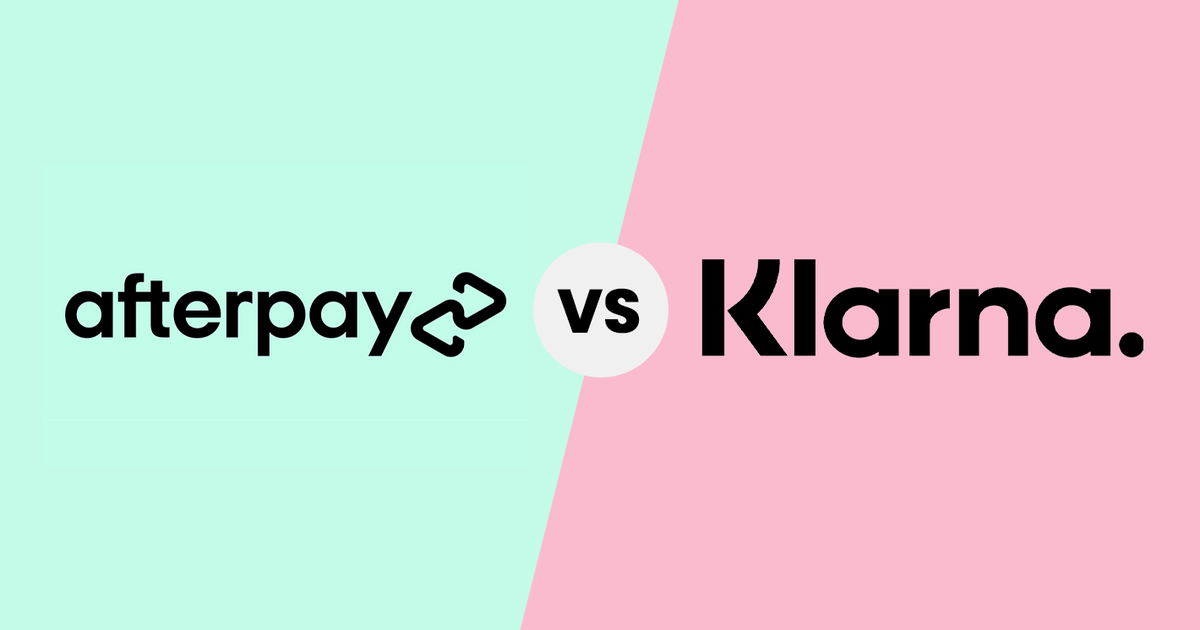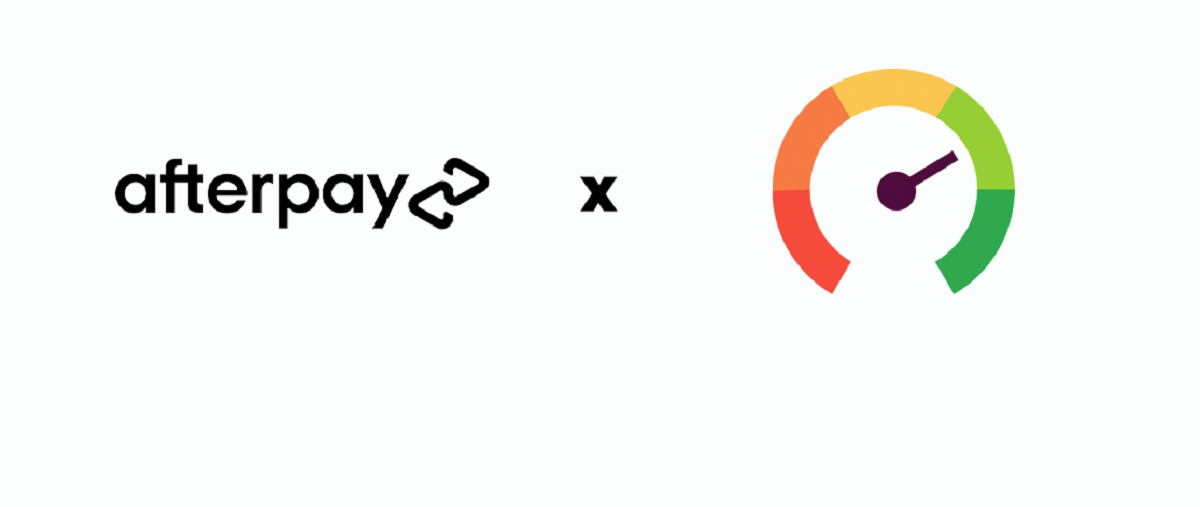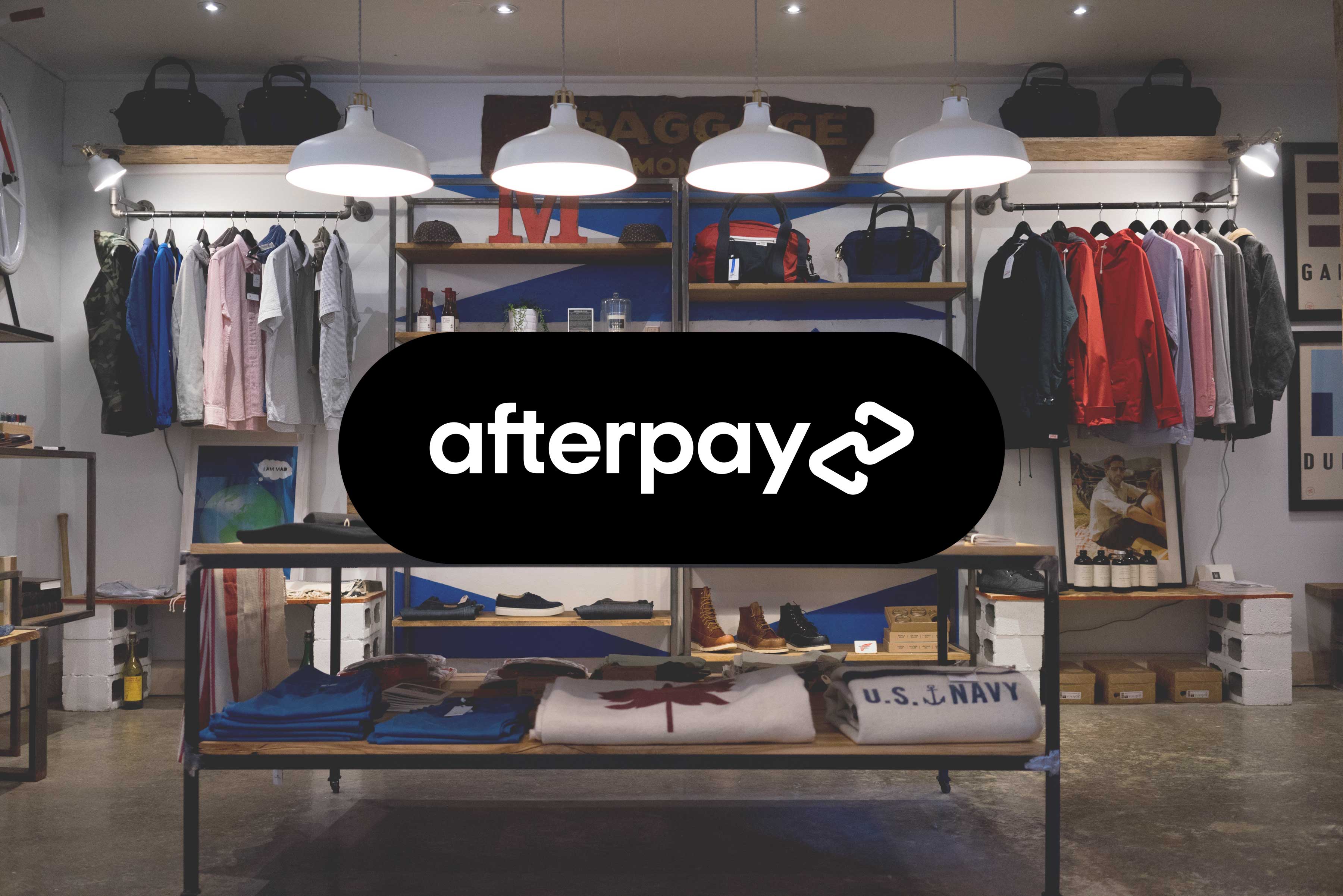Introduction
Welcome to the world of flexible payment options! If you’ve ever shopped online or gone on a shopping spree, chances are you’ve come across the names Afterpay and Klarna. These two popular payment providers have revolutionized the way people make purchases by offering a convenient and flexible way to pay for goods and services. In this article, we will take a closer look at Afterpay and Klarna, exploring their features, functionality, and ultimately, determining which one might be the better choice for you.
Both Afterpay and Klarna present users with a “buy now, pay later” approach, allowing them to purchase items upfront without having to make the full payment at the time of purchase. Instead, they offer the option to split the total cost into smaller, manageable payments, increasing affordability and financial flexibility.
Let’s dive deeper into the workings of Afterpay and Klarna to understand how they operate and the pros and cons associated with each.
What is Afterpay?
Afterpay is a leading “buy now, pay later” payment platform that allows shoppers to make purchases and split the payment into four equal installments. With Afterpay, customers can shop at their favorite online retailers and select Afterpay as the payment option during checkout.
Once a purchase is made using Afterpay, the total amount owed is divided into four equal payments. The first payment is made at the time of purchase, while the remaining three payments are automatically deducted from the user’s linked debit or credit card every two weeks. This allows customers to spread the cost of their purchase over a six-week period without incurring any interest fees.
Afterpay offers a seamless and straightforward payment process. Users can sign up for an Afterpay account either through the mobile app or the Afterpay website. Once an account is created, users can link their preferred debit or credit card to their account for automatic payments.
One of the key features of Afterpay is its instant approval process, which allows customers to make purchases immediately. Unlike traditional financing methods that require credit checks or lengthy approval processes, Afterpay provides a quick and hassle-free experience, making it an attractive option for those seeking instant gratification.
How does Afterpay work?
Afterpay offers a simple and convenient way to make purchases and pay them off in installments. Here’s how it works:
- Select Afterpay at checkout: When making a purchase online, choose Afterpay as your payment method during the checkout process.
- Create an account: If you don’t already have an Afterpay account, you’ll be prompted to create one. This involves providing some basic personal information and agreeing to Afterpay’s terms and conditions.
- Make your initial payment: After confirming your purchase, you’ll need to make the first of four equal payments upfront. This payment is typically around 25% of the total purchase price.
- Pay in installments: The remaining three payments will be automatically charged to your linked debit or credit card every two weeks. Make sure you have sufficient funds in your account to cover the payments to avoid any late fees or penalties.
- Track and manage your payments: Afterpay provides an intuitive platform where you can keep track of your payments, view your purchase history, and manage your account settings.
Afterpay stands out for its transparency and customer-friendly approach. It does not charge interest on purchases made with the platform, making it a cost-effective alternative to traditional credit cards or financing options. However, it’s important to note that Afterpay does impose late payment fees if you miss a payment, so it’s crucial to stay on top of your repayment schedule.
Overall, Afterpay’s ease of use, instant approval process, and interest-free installment plans make it an appealing choice for budget-conscious shoppers looking for a flexible payment solution.
Pros and Cons of Afterpay
Afterpay offers several benefits that have contributed to its popularity among shoppers. However, like any payment method, there are also some drawbacks to consider. Let’s explore the pros and cons of using Afterpay:
Pros:
- Convenient and flexible: Afterpay allows you to split your purchases into manageable payments, making it easier to budget and afford the items you want.
- Instant approval: Afterpay’s instant approval process means you don’t need to wait for credit checks or lengthy application processes, making it a convenient option for immediate purchases.
- Interest-free payments: Afterpay does not charge any interest or finance fees, making it a more affordable option compared to traditional credit cards.
- Transparent pricing: Afterpay provides clear and upfront pricing, so you know exactly how much you need to pay and when. This transparency helps you better manage your finances.
- Wide acceptance: Afterpay is accepted by a large number of popular online and in-store retailers, providing you with a convenient payment option across various shopping platforms.
Cons:
- Missed payment fees: If you fail to make a payment on time, Afterpay charges late fees, which can potentially increase your overall cost if you’re not careful with your repayment schedule.
- Limited spending control: With Afterpay, it’s easy to accumulate small payments across multiple purchases, which can make it challenging to keep track of your total spending and potentially lead to overspending.
- Impulse buying: Afterpay’s convenience may tempt you to make impulsive purchases that you might not have made if you had to pay upfront in full.
- Select retailer limitations: Some retailers may not offer Afterpay as a payment option, limiting your choices in where you can use the service.
Considering these pros and cons will help you decide whether Afterpay aligns with your financial needs and shopping habits. While it offers convenience and flexibility, it’s important to exercise responsible use and ensure you can meet the payment obligations to avoid additional fees or financial strain.
What is Klarna?
Klarna is a renowned online payment solution that offers shoppers the flexibility to “buy now, pay later.” It allows customers to make purchases from various online retailers and pay for them in installments over time.
Klarna provides a seamless and user-friendly experience by simplifying the payment process. Shoppers can select Klarna as their preferred payment option during checkout, which redirects them to Klarna’s platform to complete the purchase.
One of the standout features of Klarna is its ability to offer multiple payment options to customers. In addition to their “pay later” installment plan, Klarna also provides the option for customers to pay in full at the time of purchase or split the cost into a fixed number of monthly payments. This versatility caters to different financial preferences and allows shoppers to choose the payment method that best suits their needs.
To use Klarna, customers need to create an account either on the Klarna app or website. The signup process is straightforward, requiring personal information such as name, email, and billing address. Once the account is set up, customers can add their preferred payment methods, including credit or debit cards, to complete purchases through Klarna.
How does Klarna work?
Klarna offers a seamless and flexible payment solution that allows users to make purchases and pay for them over time. Here’s a step-by-step breakdown of how Klarna works:
- Select Klarna at checkout: When shopping online, choose Klarna as your payment method during the checkout process.
- Create a Klarna account: If you don’t already have a Klarna account, you’ll be prompted to create one. This involves providing some basic personal information and agreeing to Klarna’s terms and conditions.
- Choose your payment plan: Klarna offers various payment options, including a “pay later” option, interest-free installments, or the ability to pay in full upfront. Select the plan that suits your preferences and financial situation.
- Complete your purchase: Once you’ve chosen your payment plan, you can proceed to complete your purchase through Klarna. You’ll receive an order confirmation and details about your payment schedule.
- Make your payments: If you’ve chosen to pay in installments, Klarna will automatically charge your linked debit or credit card for the agreed-upon amounts at scheduled intervals. Make sure you have sufficient funds in your account to avoid any late fees or penalties.
- Manage your payments: Klarna provides an intuitive platform where you can view and manage your payments. You can track your remaining balance, adjust your payment schedule if needed, and even make early payments to pay off your balance sooner.
What sets Klarna apart is its ability to offer these payment options without any interest or additional fees. However, it’s essential to be aware that missed payments or late payments can result in fees or impact your credit score. Therefore, it’s crucial to stay organized and make your payments on time.
Klarna is available for both online and in-store purchases, making it a versatile payment solution for various shopping experiences. The wide acceptance of Klarna among retailers ensures that you can enjoy its convenience and flexibility across a vast network of merchants.
Pros and Cons of Klarna
Klarna offers several advantages that have made it a popular payment solution for many shoppers. However, like any payment method, there are also some drawbacks to consider. Let’s examine the pros and cons of using Klarna:
Pros:
- Flexible payment options: Klarna provides users with various payment options, including “pay later,” interest-free installments, and the ability to pay in full upfront. This flexibility allows shoppers to choose the best payment method for their financial situation.
- No interest or fees: Klarna does not charge any interest fees or additional costs for its payment services. This makes it a cost-effective alternative to traditional credit cards or financing options.
- Convenient and user-friendly: Klarna offers a seamless and intuitive user experience, making it easy to complete purchases and manage payments. Its platform provides clear information about upcoming payments and offers the ability to adjust payment schedules if needed.
- Wide acceptance: Klarna is accepted by a large number of online and in-store retailers, making it a versatile payment option that can be used across a wide range of merchants.
- More control over spending: With Klarna’s transparent payment options and clear payment schedules, users have greater control over their spending and can better manage their budgets.
Cons:
- Potential for late fees: While Klarna does not charge interest fees, late or missed payments can result in additional fees or penalties. It’s crucial to stay diligent with payment due dates to avoid any extra costs.
- Impact on credit score: Klarna may perform a soft credit check during account creation, and missed or late payments can impact your credit score. Responsible payment management is essential to maintain a good credit profile.
- Not available everywhere: While Klarna is widely accepted, it may not be available at all retailers. It’s essential to check if Klarna is supported by your preferred online or in-store merchants.
- Potential for overspending: The convenience and flexibility of Klarna can potentially lead to impulsive purchases or overspending if users are not mindful of their payment obligations and budgeting.
Considering these pros and cons will help you determine if Klarna aligns with your financial needs and shopping habits. While it offers flexibility and convenience, responsible use and diligent payment management are essential aspects to consider when using Klarna as a payment method.
Key differences between Afterpay and Klarna
While both Afterpay and Klarna offer “buy now, pay later” payment solutions, there are key differences to consider when comparing the two. Let’s explore the main differences between Afterpay and Klarna:
Payment Structure:
- Afterpay: Afterpay breaks down payments into four equal installments, with the first payment made at the time of purchase. The remaining payments are automatically deducted every two weeks, providing a six-week repayment period.
- Klarna: Klarna offers multiple payment options, including the ability to pay in full at the time of purchase or split the cost into several interest-free installments. Klarna provides more flexibility in determining the payment structure.
Platform Availability:
- Afterpay: Afterpay primarily operates in certain regions, such as the United States, Australia, New Zealand, and the United Kingdom.
- Klarna: Klarna is available in a broader range of countries, including the United States, Canada, Europe, and Australia, making it more accessible to international shoppers.
Late Fees:
- Afterpay: Afterpay charges late fees if payments are missed or late, which can add additional costs to the purchase.
- Klarna: Klarna also charges fees for missed or late payments, but they have recently updated their policy to be more customer-friendly, straying away from traditional late fees. However, it’s important to always check the terms and conditions for the most accurate information on late fees.
Approval Process:
- Afterpay: Afterpay offers instant approval, allowing users to make purchases immediately without waiting for credit checks or lengthy approval processes.
- Klarna: Klarna typically performs a soft credit check during the account creation process to assess eligibility. However, this check does not impact the user’s credit score and is designed to ensure responsible lending practices.
Considering these differences can help you decide which payment solution better suits your needs. Afterpay provides a straightforward installment plan structure, while Klarna offers more payment options and availability across a wider range of countries.
Which one is better: Afterpay or Klarna?
Determining which payment solution is better, Afterpay or Klarna, ultimately depends on your personal preferences, location, and shopping habits. Both platforms offer convenient “buy now, pay later” options with unique features and benefits. Here are some factors to consider when deciding:
Payment Structure:
If you prefer a fixed installment plan with four equal payments, Afterpay may be the better choice for you. On the other hand, if you prefer more flexibility in determining your payment structure, Klarna’s various payment options, including paying in full or splitting payments into multiple installments, may better meet your needs.
Availability:
Consider the availability of each platform in your location. Afterpay primarily operates in certain regions, while Klarna is available in a broader range of countries. Ensure that the platform you choose is supported by the retailers you frequently shop with.
Late Fees:
It’s essential to consider the potential impact of late fees on your payment behavior. Afterpay and Klarna both charge fees for missed or late payments, but Klarna has recently moved away from traditional late fees. However, it’s important to review the terms and conditions of each platform to understand the fee structure and potential costs.
Additional Features:
Explore any additional features or benefits each platform may offer. For example, Klarna’s platform allows users to adjust payment schedules and even make early payments to pay off balances sooner.
User Experience:
Consider the user experience and user interface of each platform. Evaluate factors such as ease of use, customer support, and the intuitiveness of the platform’s features. Choose a platform that aligns with your preferences and provides a seamless shopping experience.
Ultimately, the decision between Afterpay and Klarna depends on your individual needs and preferences. Take the time to assess your financial situation, research each platform’s offerings, and consider the key factors mentioned above. Whatever platform you choose, it’s essential to use the service responsibly and ensure you can meet your payment obligations to avoid any additional fees or financial strain.
Conclusion
After exploring the features, functionality, and differences between Afterpay and Klarna, it’s evident that both payment solutions offer unique benefits to users. Afterpay’s fixed installment plan and instant approval process make it appealing for those seeking a straightforward and quick payment option. On the other hand, Klarna provides more flexibility in payment structures and wider availability, making it a suitable choice for individuals who prefer greater control over their payment options.
Ultimately, the decision between Afterpay and Klarna depends on your personal preferences, location, and shopping habits. Consider factors such as the payment structure, availability in your region, potential fees, and additional features provided by each platform. It’s crucial to choose a payment solution that aligns with your financial needs and helps you manage your budget effectively.
Regardless of which platform you choose, responsible use of these “buy now, pay later” options is key. Make sure to stay organized, keep track of payment due dates, and ensure you can meet your payment obligations to avoid any late fees or potential impact on your credit score. By using these payment solutions responsibly, you can take advantage of the convenience and flexibility they provide while maintaining financial stability.
Consider your needs, explore the options available, and choose the payment solution that best suits you. Whether it’s Afterpay or Klarna, both platforms aim to make your shopping experience more enjoyable and affordable by offering flexible payment options.

























